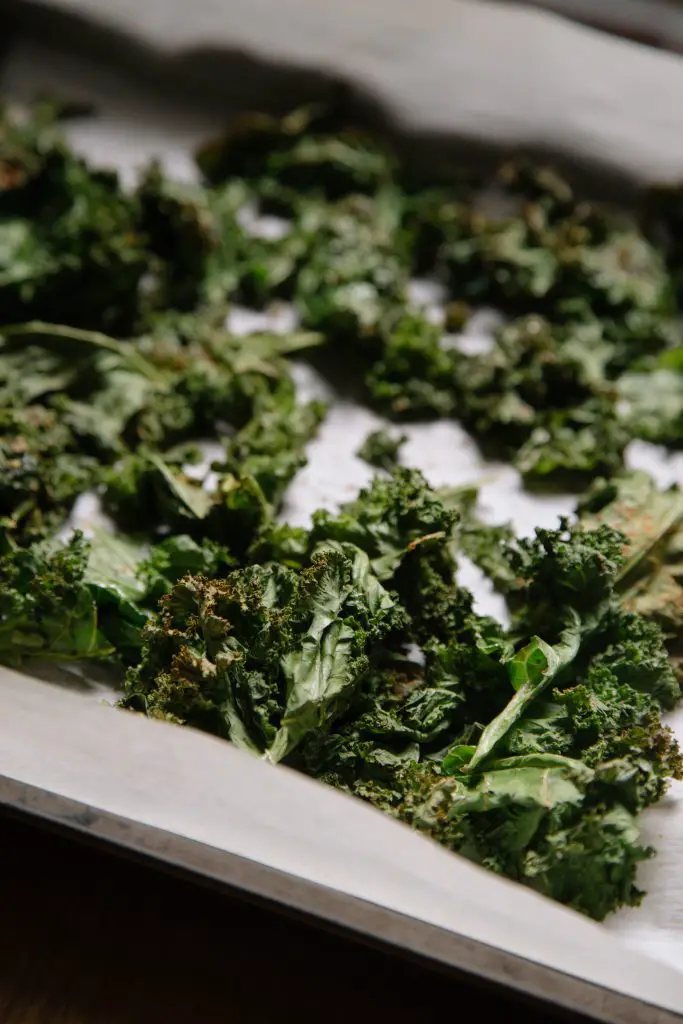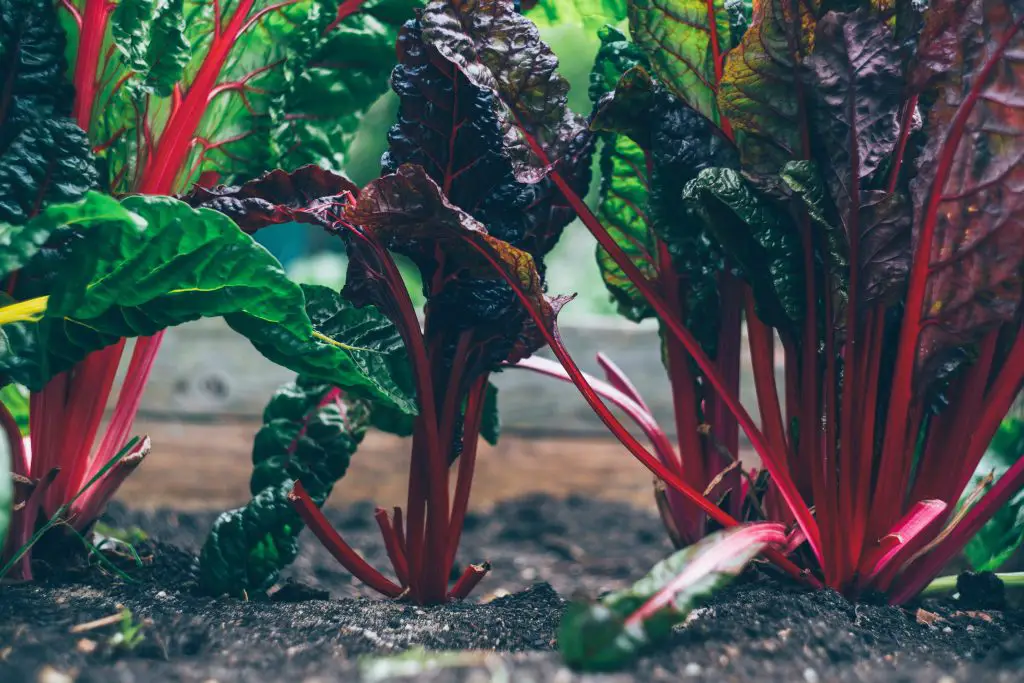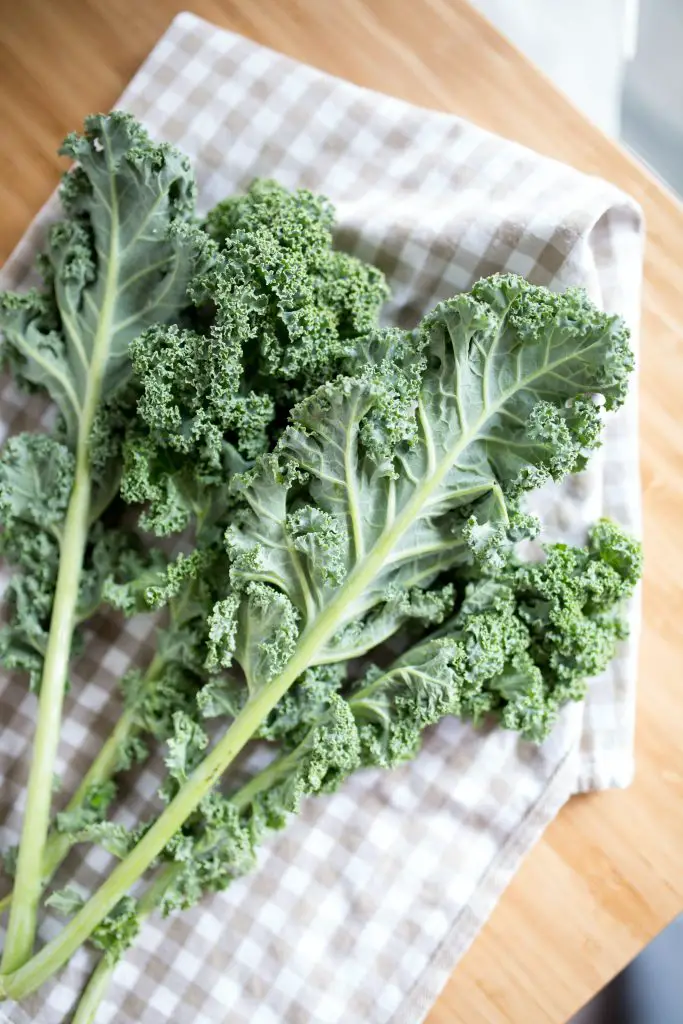Is Chard And Kale The Same Thing? Chard and Kale are both popular greens that are widely available and used in a range of dishes. But aren’t they just the same thing with a different name? If not what’s the difference?
Chard and kale are distinctly different species that belong to different plant families. Chard is a member of the beet family and is closely related to beetroot and sugar beet whereas is kale is a member of the brassica family. As a result of this Kale has a distinctive flavour that is typical of the brassicas family whereas chard has a milder in flavour.
In terms of appearance chard generally has a much broader leaf that is glossy and deep green in colour whereas is kale’s leaves tend to have a dull appearance that is bluish-green leaves. Additionally, there are varieties of chard that have bright colourful stems which include white, yellow, red, and green. See the image below.
Kale also has a range of different types of cultivars however the best-known of these is curly kale and tuscan kale which are the varieties that are most commonly sold in grocery stores. Tuscan kale is a variety that has narrow leaves which are approximately 3 to 4 inches wide with undulating bluish-green leaves. Whereas curly leaf kale tends to have a brighter green color with leaves that flat in the centre with curly tips.

Which Is Better For You Kale Or Chard?
Kale is generally considered as a superfood and is highly regarded among the nutrition community whereas chard generally does not rate a mention in this category. Is there really that much of a difference?
When we compare data from the my food data website we can see that kale contains a slightly higher level of protein and fibre than chard. The other distinctive benefit of eating kale over chard is that the calcium and folate levels are significantly higher.
Additionally, the kale has generally higher levels of amino acids across the board and an increased level of antioxidants which explains why it is regarded as being a superfood.
So kale would be a better choice than chard from a nutritional point of view though chard is still considered quite a healthy option.
Can Kale Or Chard Be Used Interchangeably In Recipes?
Kale and chard can be generally substituted for each other in most recipes though kale will change the flavour and the texture a little bit. This is because kale tends to have a stronger flavour that is typical of brassicas and also the texture of the leaves is somewhat tougher than chard.
However, chard has a relatively thick central stem that is somewhat akin to celery in texture though not as stringy. This central stem is sometimes removed from the leaves and cooked for a longer period of time to ensure that it’s tender.

Which Plant Produces The Largest Harvest Kale or Chard?
Of the two plants chard is produces a much higher yield than kale and is definitely one of the first plants I would recommend putting in your garden if you want to have produce year-round.
However, both plants are excellent croppers that will produce green leaves for the best part of 9 to 12 months if the plants are looked after.
How To Grow Kale And Chard
Despite the fact that both of these plants come from separate plant families they require similar growing conditions and can also be planted at a similar time of the year. In all regions, kale and chard are ideally planted in spring and will start to produce leaves throughout the summer, autumn and into the winter if you live in a relatively mild climate, greater than zone 7 for chard and greater than zone 8 for kale.
To ensure that you get a relatively early harvest it is important to plant the seeds as early as possible in spring. To get an early start on this it is advisable to plant in seed trays indoors.
To plant the seeds start by filling the seed tray with a good quality seed raising mix. If you are using a modular seed tray plant 2 to 3 seeds per cell at a depth of approximately 0.5 inches (1 cm).
Once the seeds are planted it will typically take somewhere between 7 and 14 days for the seedlings to appear. If the area where you are growing seedlings is relatively warm the seedlings will need to spend approximately 4 to 6 weeks in the seed tray before being planted out into the garden.

Planting The Seedlings Into The Garden
Seedlings should be planted out into the garden once there is no risk of frost. The seedling should ideally be spaced approximately 10 inches apart in a location that gets at least 6 to 8 hours of sun per day. However, as these plants produce leafy greens they can also tolerate relatively shady locations.
When planting the seedlings in the ground it is also important to apply a thick layer of mulch and also snail pellets as both of these plants are susceptible to attack from slugs and snails.
In terms of soil conditions, both plants prefer a rich moist and free-draining soil that is slightly acidic ideally, however they will tolerate a range of soil conditions.
Harvesting and Ongoing Care Of Chart And Kale
Once the plants are in the ground and they have become established there is very little maintenance that is required other than ensuring that the bed remains weed-free and is water regularly.
In terms of harvesting the plants, they can be harvested at any stage once the leaves reach a reasonable size. When harvesting a plant it is important to ensure that you leave at least a few leaves on the plant to ensure that it can recover quickly for your next harvest.
In the case of chard, it is important to pick the outer leaves first as they will be the oldest and most mature leaves on the plant. This will allow the plant to continue producing new leaves at the centre of the plant ensuring a continuous harvest.

In the case of kale the growth of the plant is more upright with new leaves being added to the top of a plant. This means that the leaves should be harvested from the base of the plants as these are the oldest. It is also important to note that you should never remove the top of a kale plant as that will stop it from producing further leaves.
The harvesting of leaves for both plants can continue until either cold weather kills the plant or in regions where the winters are mild the plant runs to seed. This normally occurs in the following spring when the weather warms up. In these regions, it is best to plant seeds as early as possible to ensure that you have a continuous supply around.
Relevant Articles
Is Kale Lettuce? Is There A Difference?
How To Harvest Kale To Keep It Growing
Collard Greens Vs Kale: What’s the Difference And How To Tell Them Apart
Chard Vs Spinach: Are They The Same Thing?
Is Swiss Chard And Rhubarb The Same Thing? How Do You Tell The Difference?
